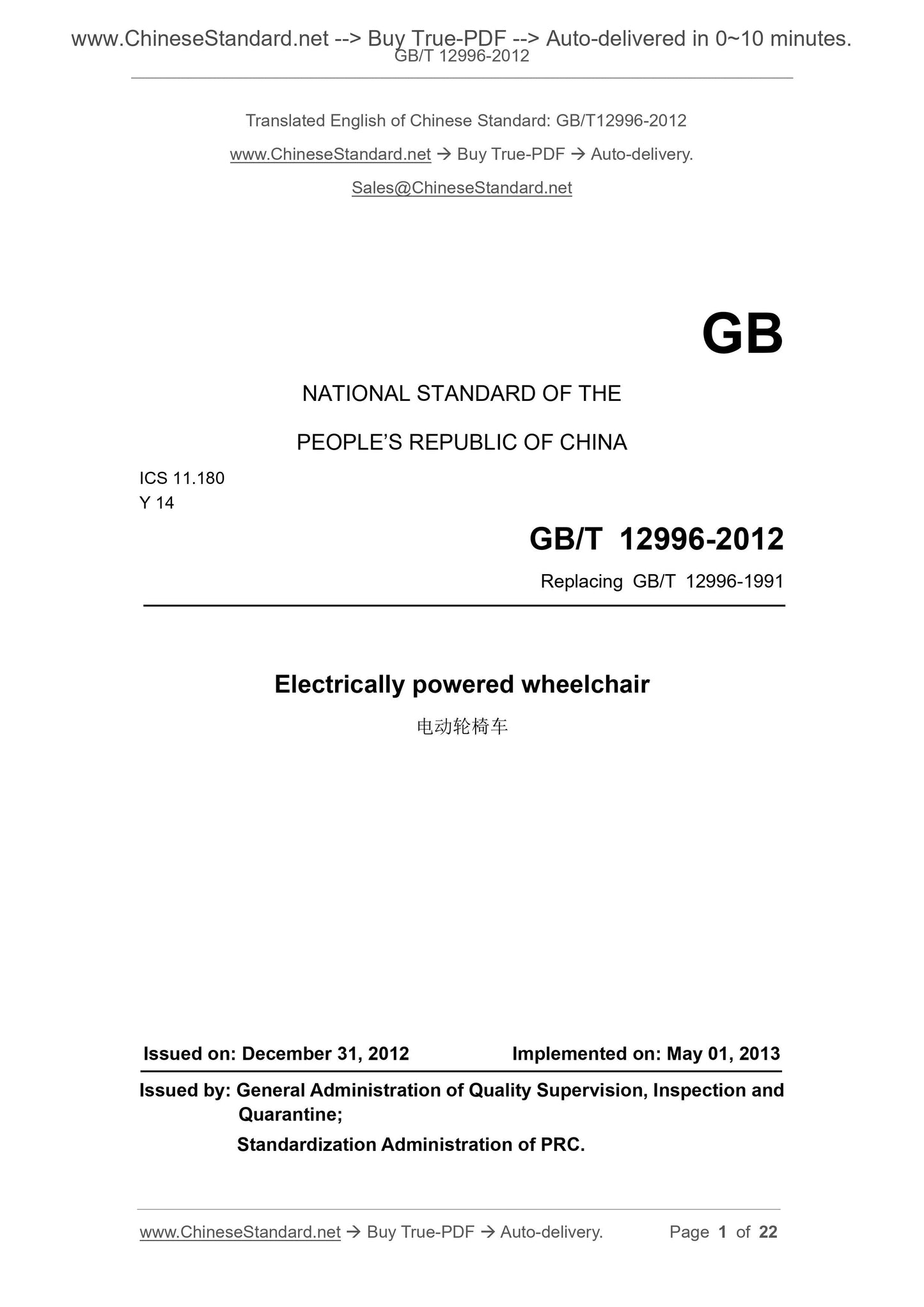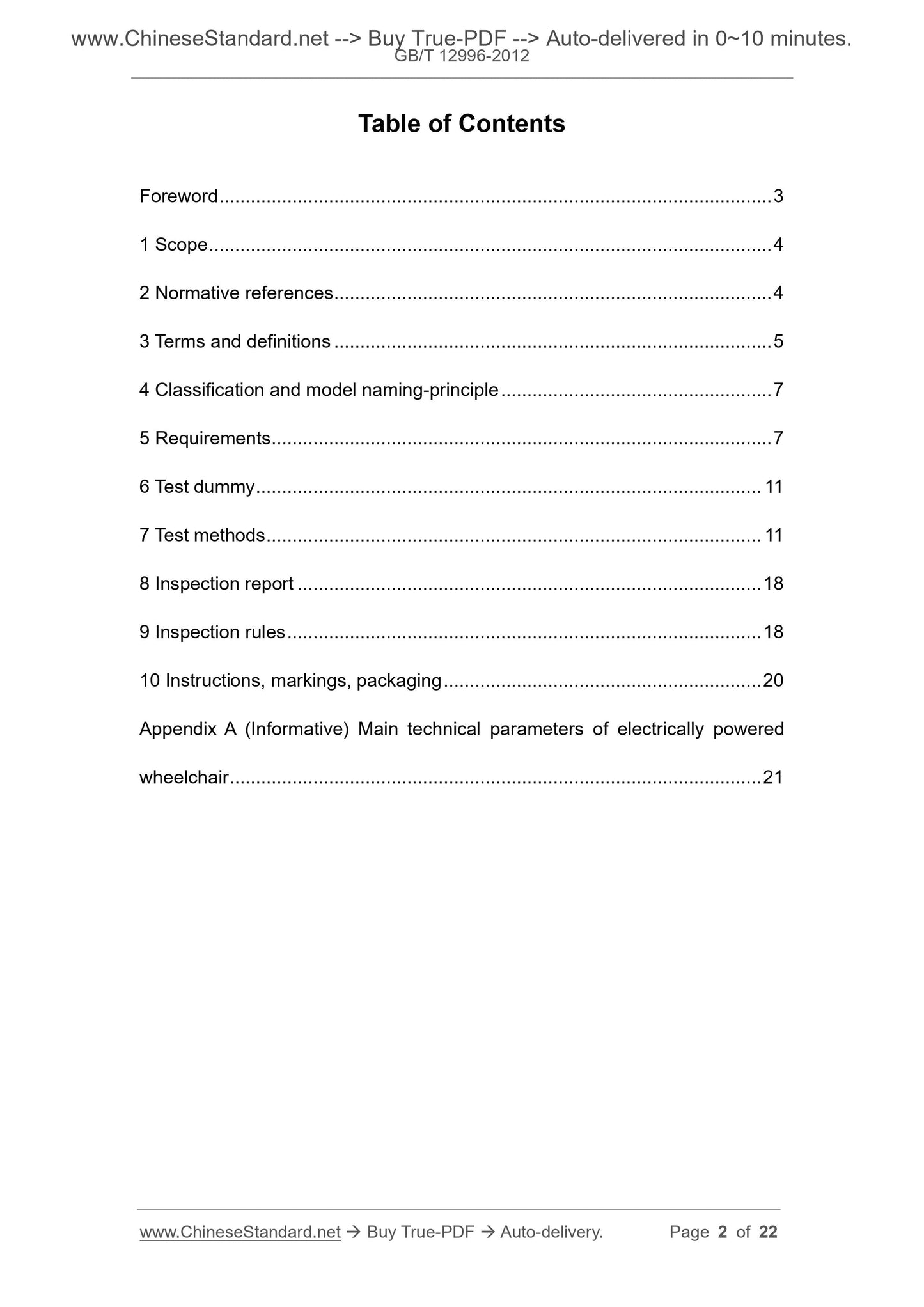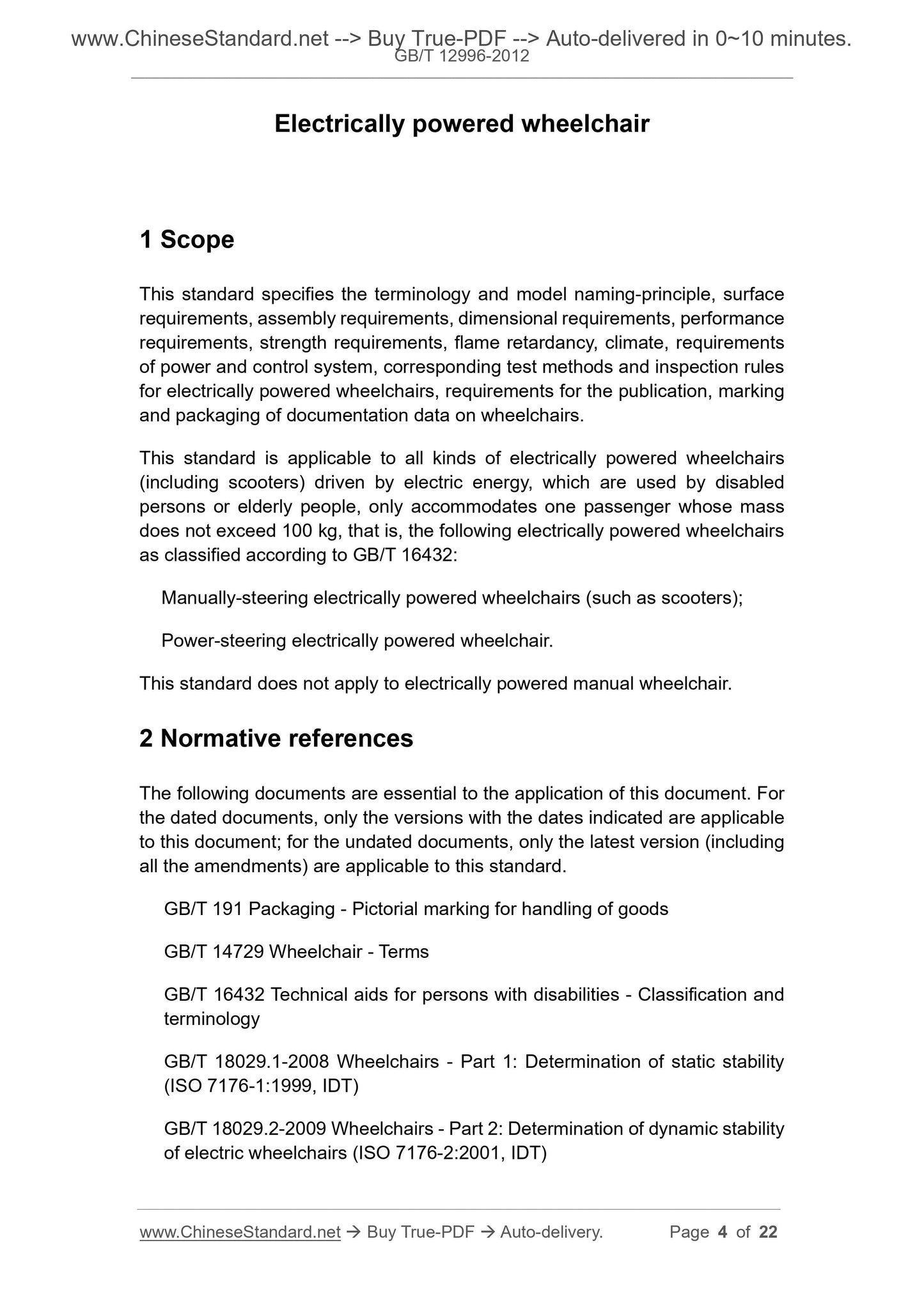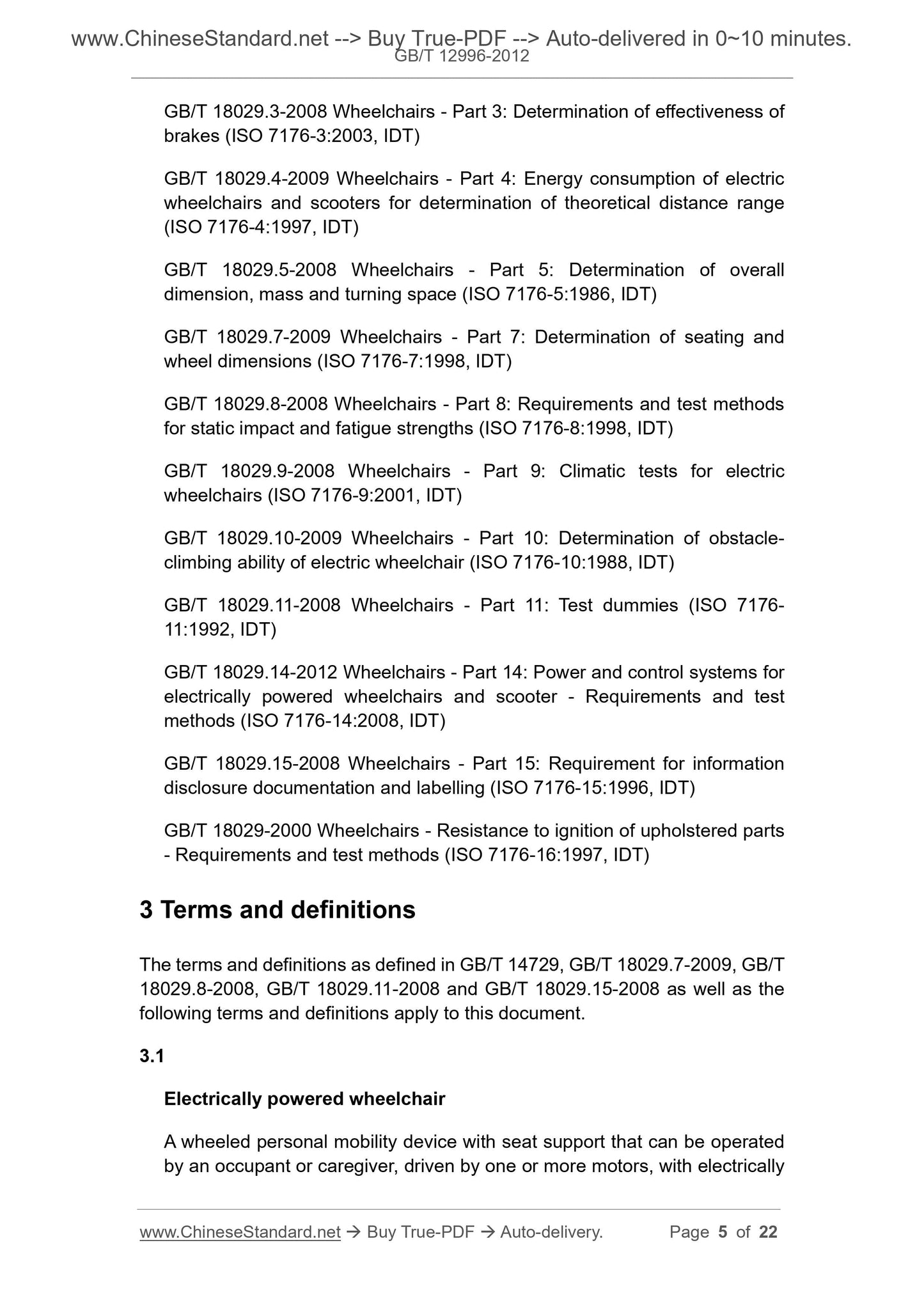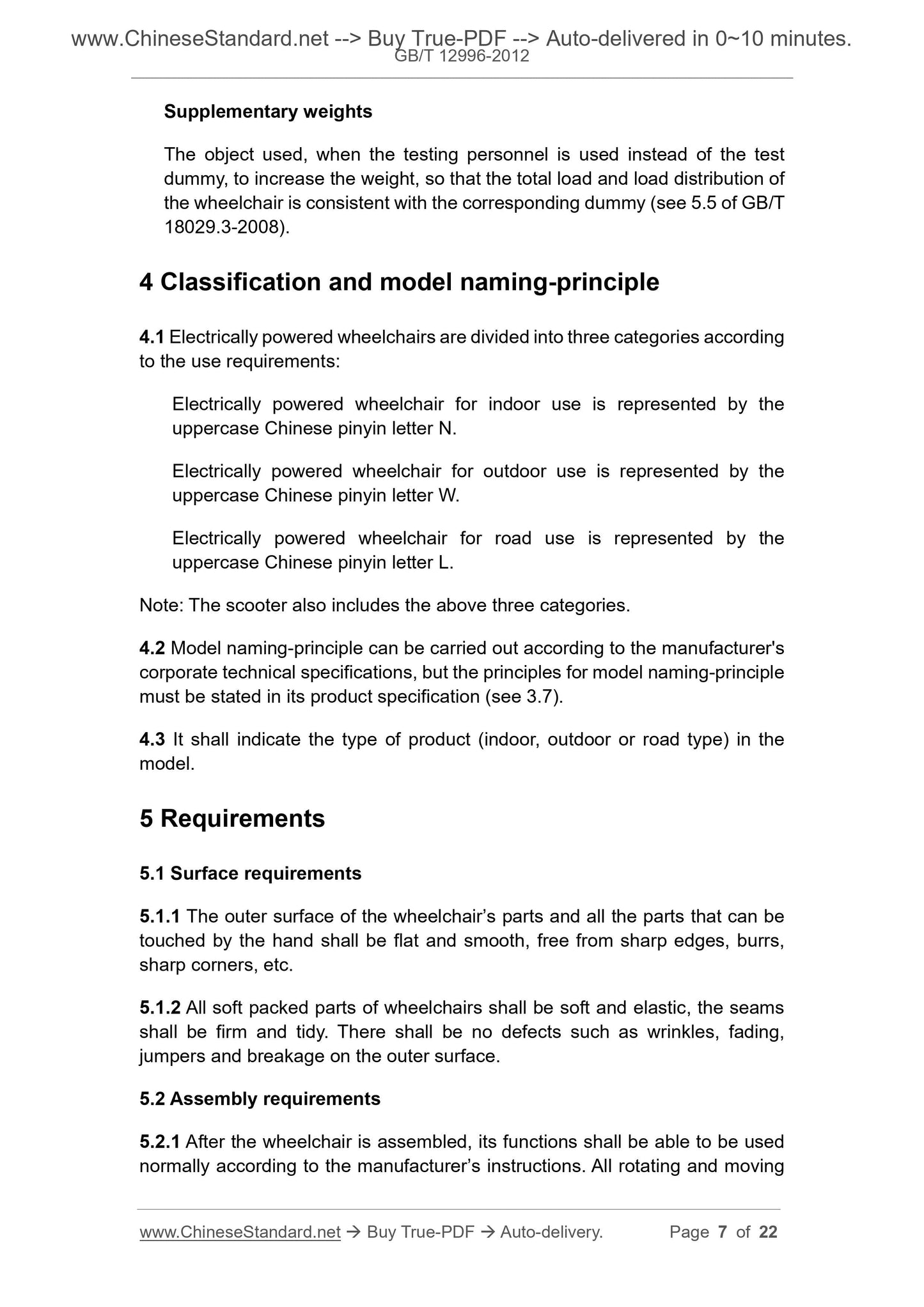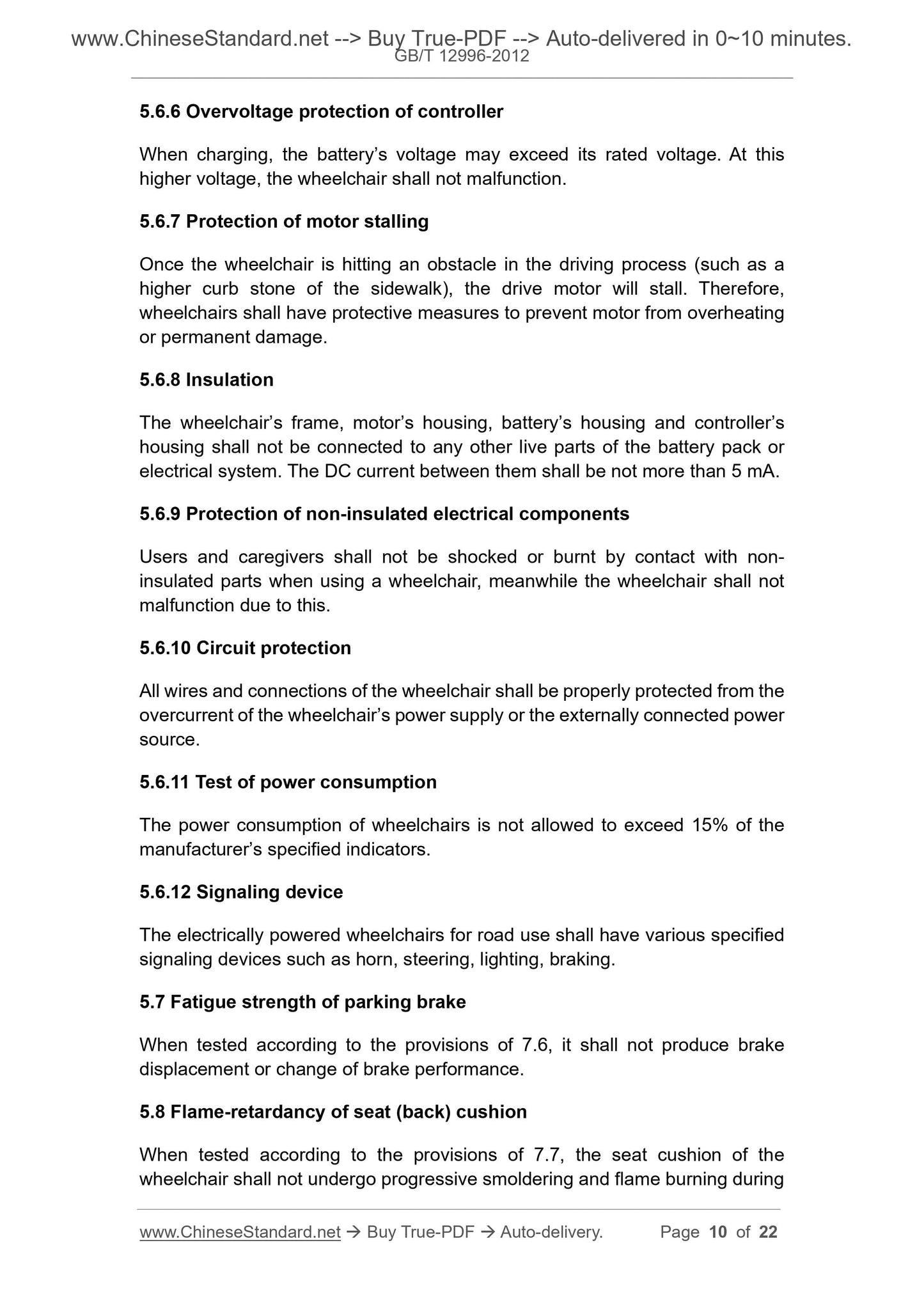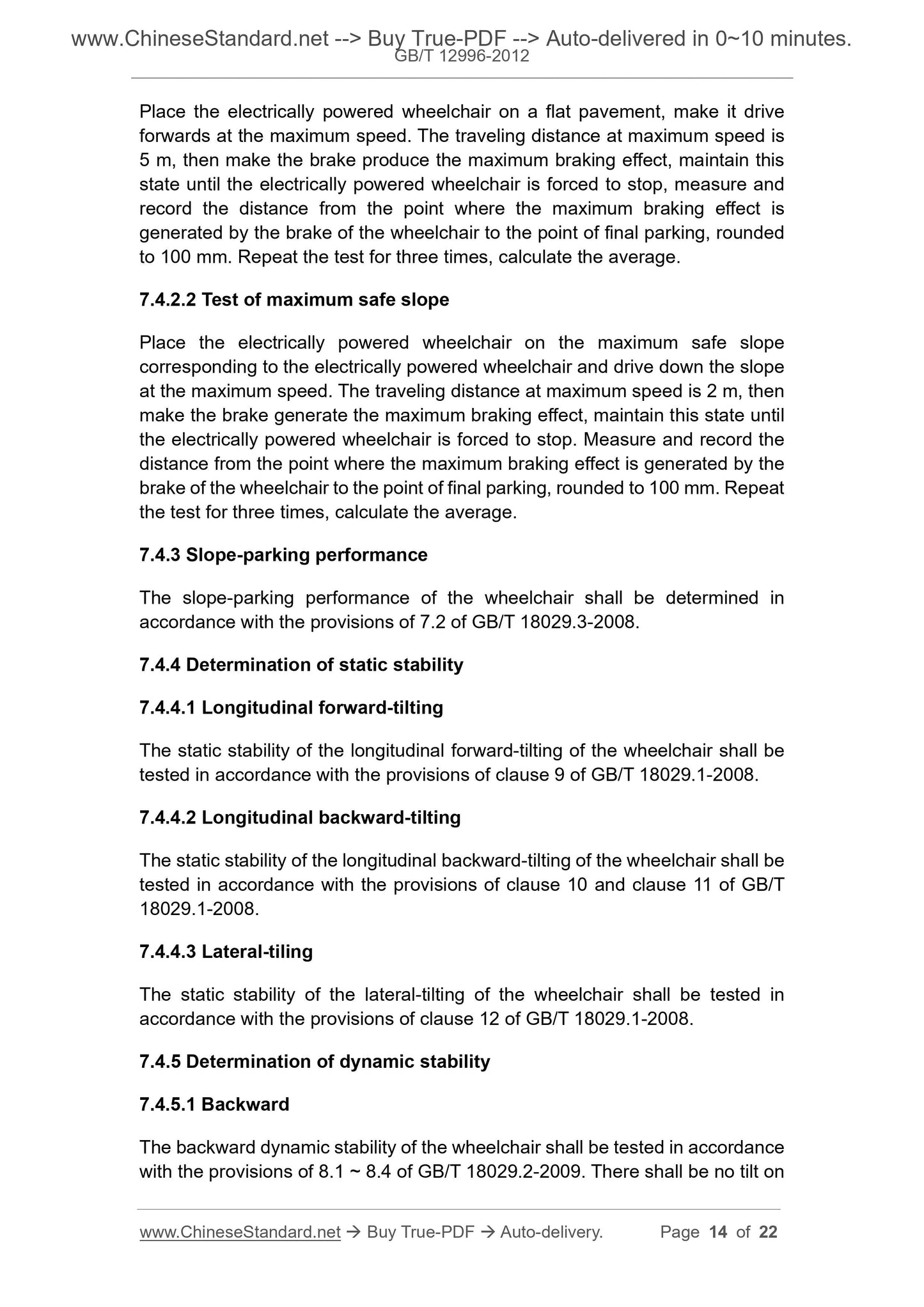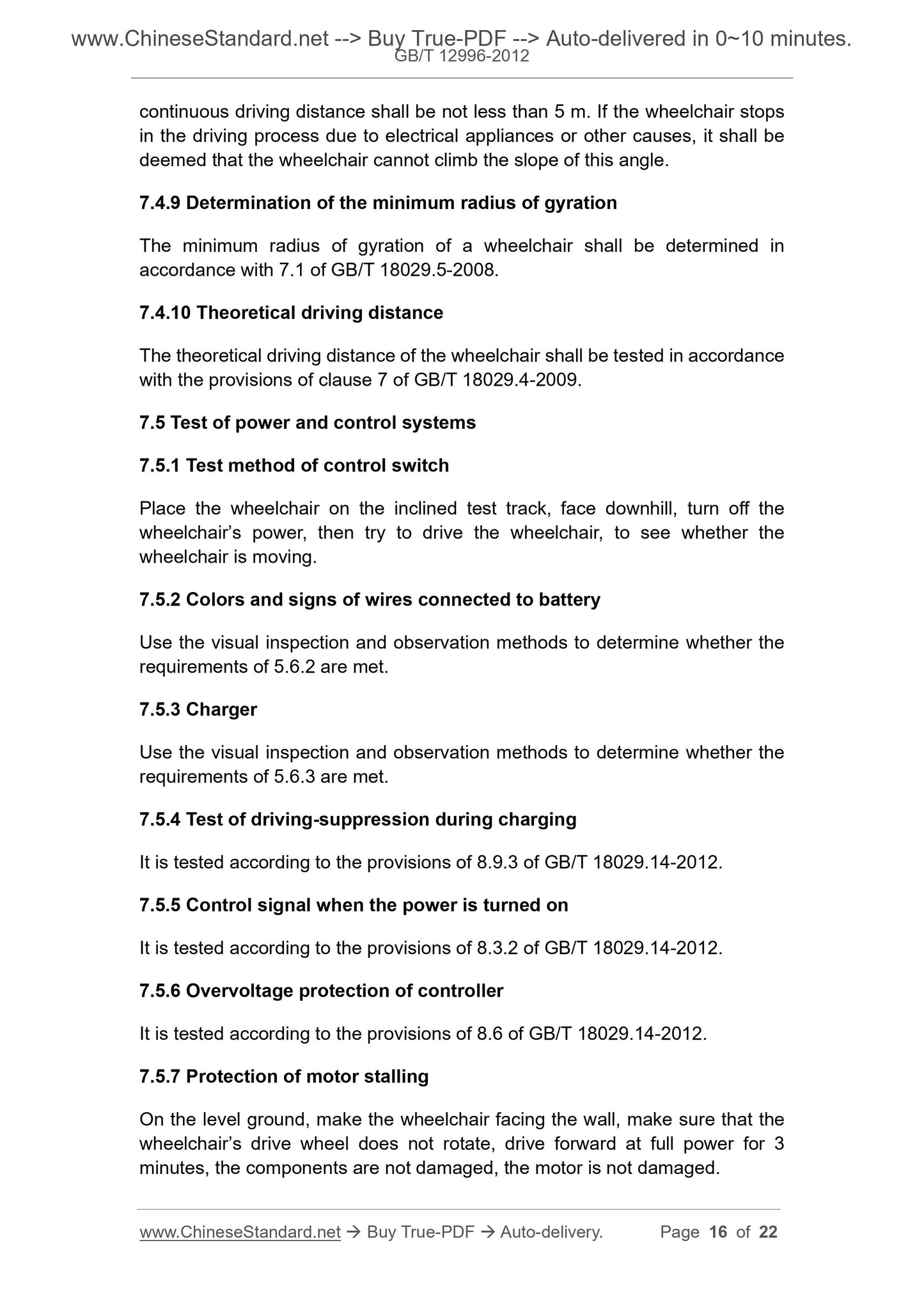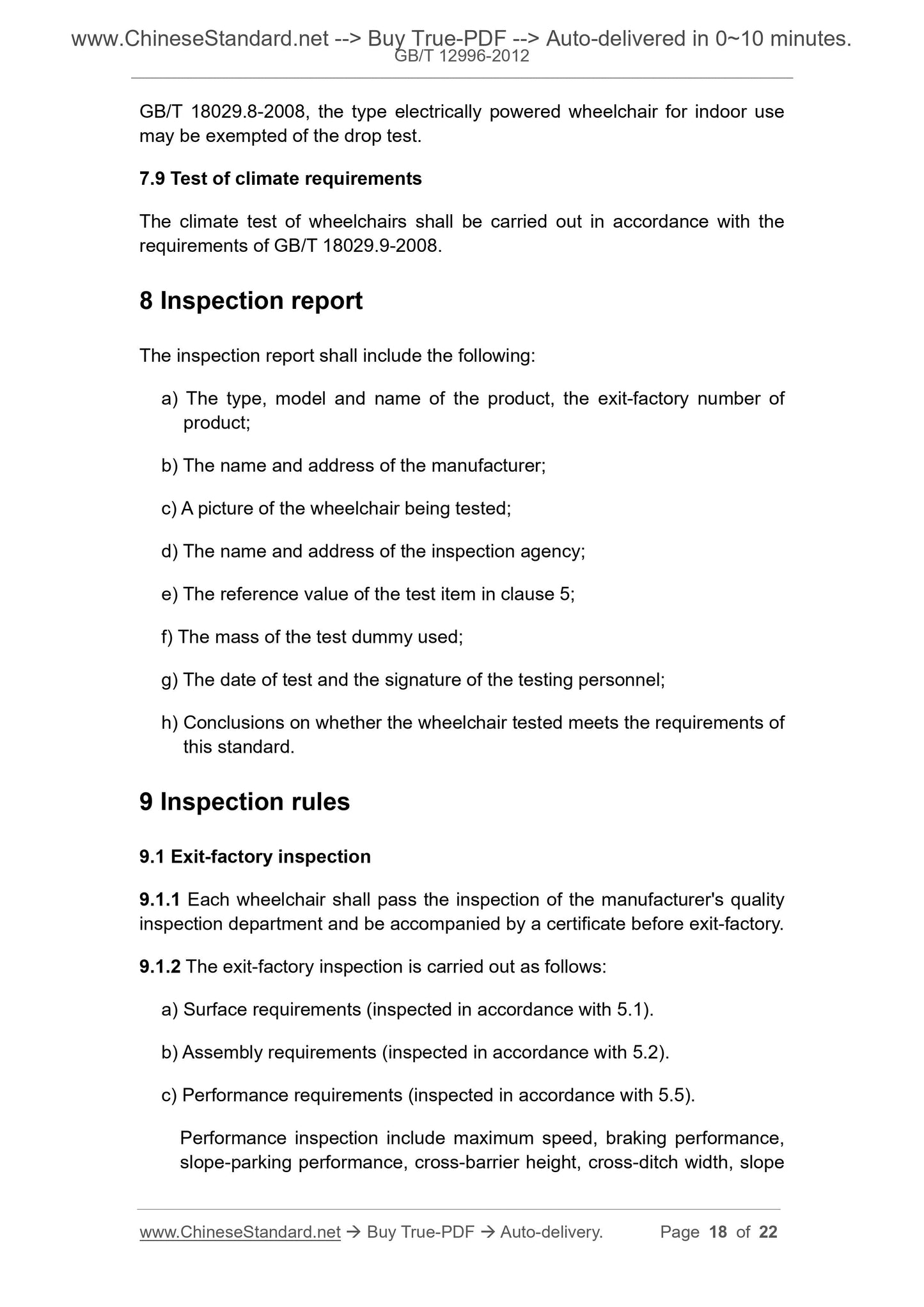1
/
of
9
www.ChineseStandard.us -- Field Test Asia Pte. Ltd.
GB/T 12996-2012 English PDF (GB/T12996-2012)
GB/T 12996-2012 English PDF (GB/T12996-2012)
Regular price
$150.00
Regular price
Sale price
$150.00
Unit price
/
per
Shipping calculated at checkout.
Couldn't load pickup availability
GB/T 12996-2012: Electrically powered wheelchair
Delivery: 9 seconds. Download (and Email) true-PDF + Invoice.Get Quotation: Click GB/T 12996-2012 (Self-service in 1-minute)
Newer / historical versions: GB/T 12996-2012
Preview True-PDF
Scope
This standard specifies the terminology and model naming-principle, surfacerequirements, assembly requirements, dimensional requirements, performance
requirements, strength requirements, flame retardancy, climate, requirements
of power and control system, corresponding test methods and inspection rules
for electrically powered wheelchairs, requirements for the publication, marking
and packaging of documentation data on wheelchairs.
This standard is applicable to all kinds of electrically powered wheelchairs
(including scooters) driven by electric energy, which are used by disabled
persons or elderly people, only accommodates one passenger whose mass
does not exceed 100 kg, that is, the following electrically powered wheelchairs
as classified according to GB/T 16432.
Manually-steering electrically powered wheelchairs (such as scooters);
Power-steering electrically powered wheelchair.
This standard does not apply to electrically powered manual wheelchair.
Basic Data
| Standard ID | GB/T 12996-2012 (GB/T12996-2012) |
| Description (Translated English) | Electrically powered wheelchair |
| Sector / Industry | National Standard (Recommended) |
| Classification of Chinese Standard | Y14 |
| Classification of International Standard | 11.180 |
| Word Count Estimation | 16,198 |
| Older Standard (superseded by this standard) | GB/T 12996-1991 |
| Quoted Standard | GB/T 191; GB/T 14729; GB/T 16432; GB/T 18029.1-2008; GB/T 18029.2-2009; GB/T 18029.3-2008; GB/T 18029.4-2009; GB/T 18029.5-2008; GB/T 18029.7-2009; GB/T 18029.8-2008; GB/T 18029.9-2008; GB/T 18029.10-2009; GB/T 18029.11-2008; GB/T 18029.14-2012; GB/T 1802 |
| Regulation (derived from) | National Standards Bulletin No. 42 of 2012 |
| Issuing agency(ies) | General Administration of Quality Supervision, Inspection and Quarantine of the People's Republic of China, Standardization Administration of the People's Republic of China |
| Summary | This standard specifies the terms for electric wheelchairs and model nomenclature, surface requirements, assembly requirements, size requirements, performance requirements, strength requirements, flame resistance, climate, power and control system require |
Share
